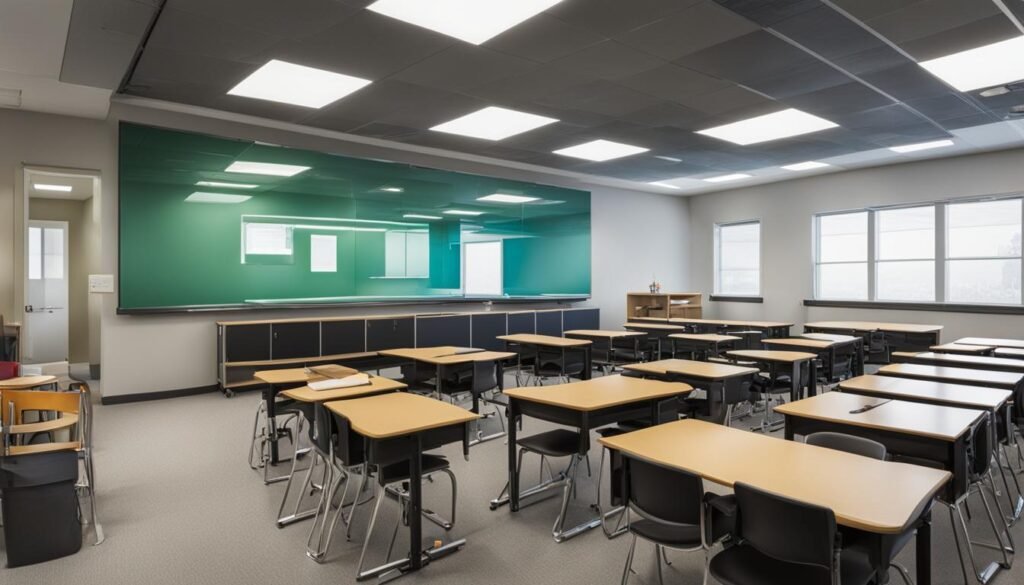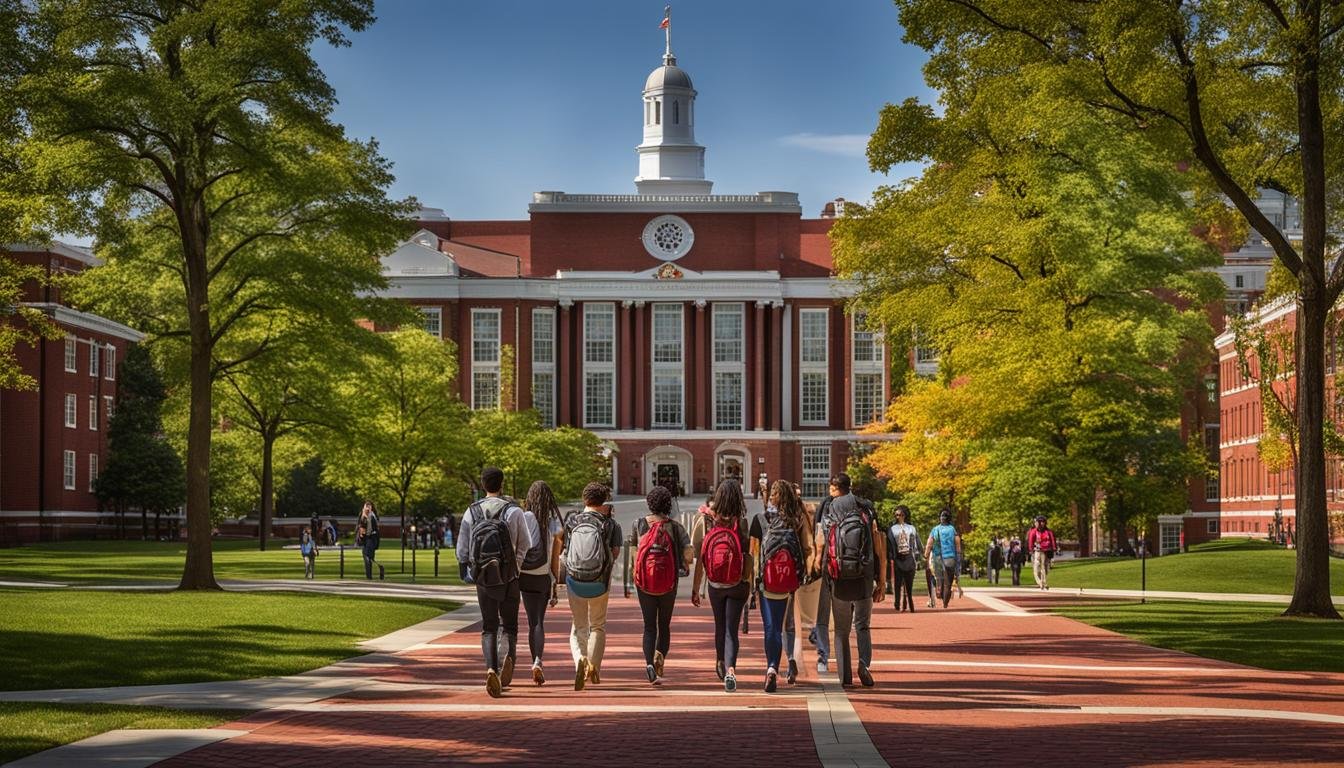What Is The Difference Between A College And A University : While the terms “college” and “university” are often used interchangeably, they represent distinct types of higher education institutions within the United States. Understanding the difference between a college and a university is crucial for prospective students looking to find the right educational environment for their unique needs. In this article, we will explore the nuances and characteristics that set colleges and universities apart, including size, research opportunities, program offerings, and more. Whether you’re considering a traditional college, a research-intensive university, or something in between, this comprehensive guide will provide valuable insight into the college vs university debate.
Key Takeaways
- Colleges generally emphasize undergraduate education, often providing a broad range of academic areas through liberal arts programs.
- Universities typically include both undergraduate and graduate degree programs, with a larger institution size and more focus on research.
- The terms “college” and “university” hold different meanings around the world, which can create confusion for international students.
- Some important factors to consider when choosing between a college and university include personal learning style, desired class size, and academic and career objectives.
- Research opportunities, campus life, and faculty engagement also play a pivotal role in shaping the college or university experience.
Understanding the Basics: College vs University
The general misconception surrounding college and university terms arises from their varying definitions across the globe. This confusion, in turn, can lead to international students overlooking institutions with “college” in their name. In the U.S., both colleges and universities grant undergraduate degrees. However, colleges often refer to smaller institutions that focus on undergraduate education, including liberal arts colleges which provide education across various academic fields. On the other hand, universities represent larger institutions offering a more extensive array of both undergraduate and graduate programs, with a strong emphasis on research.
The General Misconception About College and University Terms
“College” and “university” are not universally used interchangeably, and their meanings can differ significantly from country to country.
Such misunderstandings may result in international students unintentionally bypassing institutions based on their title instead of the programs and opportunities offered. Consequently, it is crucial to comprehend the nuances of these terms when considering higher education in the United States.
Why the College vs University Debate Matters for Students
Understanding the distinction between colleges and universities is essential for prospective students as it can greatly impact their educational journey. Factors such as school size, faculty-to-student ratio, research opportunities, and academic offerings play a significant role in this decision-making process.
- Colleges may offer a close-knit community with smaller classes and a liberal arts education.
- Universities may provide extensive research opportunities alongside a wider array of program options, including large public institutions with a high commitment to research.
The choice between a college and a university should be informed by factors such as personal learning style, desired class size, and academic and career objectives, ensuring the optimal educational experience. In this crucial decision time, students must weigh their options carefully to make the most of their higher education journey.
Breaking Down the Term: What Does “College” Really Mean?

In the United States, the term “college” can represent various types of higher education institutions, ranging from the iconic liberal arts college to community colleges that serve as the gateway to higher education. Let’s have a closer look at these types of colleges and the different opportunities they offer:
The Iconic Liberal Arts College Explained
Liberal arts colleges are known for their focus on undergraduate education across a broad range of academic areas, debunking misconceptions that they solely concentrate on the humanities. These institutions emphasize a well-rounded education rather than early specialization, offering degrees in disciplines such as science and mathematics, in addition to humanities and arts.
Though less common outside the United States, American liberal arts colleges often provide a residential community living experience, fostering a close-knit environment for students.
Community College: Gateway to Higher Education
Community colleges are an integral part of the higher education landscape in the United States. These colleges offer two-year programs aimed at earning associate degrees or career-related certificates. The affordability and smaller enrollment size of community colleges make them an attractive option for many students, who can then transfer to four-year institutions to complete their bachelor’s degrees.
Associate Degrees and Beyond: Opportunities in Community Colleges
Community colleges present opportunities beyond earning associate degrees. They prepare students for entry into the workforce with career-related certificates and provide stepping stones for students seeking to complete a bachelor’s degree at a four-year college or university. Despite the term “college” implying a smaller size, some community colleges have large student bodies comparable to those at universities, thanks to their diverse offerings.
In summary, understanding and breaking down the term “college” helps prospective students and their families make informed decisions about their post-secondary education options. Whether it is a liberal arts college focused on undergraduate education across various academic disciplines or a community college offering affordability and flexibility, colleges in the United States can provide excellent opportunities for career readiness and personal growth.
The Comprehensive Nature of Universities

Both public and private universities in the United States provide students with a diverse range of academic opportunities, thanks to their comprehensive nature. They offer extensive undergraduate and graduate programs, emphasizing research and fostering a rich learning experience across various disciplines.
Public Universities: Large Campuses and Diverse Programs
Public universities are some of the largest higher education institutions in the U.S., with some enrolling tens of thousands of students. They prioritize research production and offer a diversity of undergraduate and graduate programs to cater to different interests and aspirations. The large campuses at these universities house an extensive array of facilities and labs, which are instrumental in supporting research endeavors and providing students with a broad educational experience.
Private Universities: Selective Admissions and Unique Offerings
Private universities, including prestigious Ivy League institutions like Princeton University, are often characterized by their selective admissions processes and unique academic offerings. Contrary to the belief that all universities are large, some may be quite small in size, such as Alaska Pacific University with about 300 undergraduates. These institutions often provide liberal arts-type studies and core curricula in addition to major-specific coursework, ensuring a well-rounded education that caters to different learning styles and preferences.
“Private universities, including prestigious Ivy League institutions, are often characterized by their selective admissions processes and unique academic offerings.”
In conclusion, both public and private universities play a crucial role in shaping the educational landscape in the United States. Their comprehensive nature, which encompasses diverse academic programs and a strong emphasis on research, allows them to offer a wide range of learning opportunities and experiences to cater to different student needs and aspirations.
Size and Scope: Comparing the College and University Experience

When it comes to the overall experience at colleges and universities, two key factors to consider are class sizes and research opportunities. These aspects vary greatly between liberal arts colleges and larger universities and can significantly impact the personalized education experience that students receive.
Diving into Class Sizes and Student-Faculty Ratio
Liberal arts colleges are known for their small class sizes, which allow students to actively engage in discussions, develop close relationships with professors, and receive personalized attention. One example is Franklin & Marshall College, which has a 10:1 student-faculty ratio and an average class size of 17 students. This ensures that each student benefits from tailored academic guidance and creates a supportive, tight-knit community atmosphere.
Universities, on the other hand, often have larger class sizes due to their more extensive student population. This may result in less individualized attention from faculty members, and some classes may involve hundreds of students. Although this environment can be challenging for some, it can also provide a wealth of resources and opportunities for students seeking a diverse community with a wide range of academic and extracurricular activities.
Exploring Research Opportunities at Universities and Colleges
Research opportunities play an essential role in the higher education experience and are more extensive at universities than at colleges. This is mainly attributed to universities’ larger size and the significant research funding they receive. Universities offer an array of undergraduate, graduate, and faculty-led research projects across diverse disciplines, greatly benefiting students seeking a research-focused education.
While it’s commonly believed that colleges lack substantial research opportunities, this is not always the case. In fact, some liberal arts colleges actively engage undergraduates in research projects. For instance, 65% of students at Franklin & Marshall College participate in research before graduation, challenging the notion that colleges offer limited research experiences.
| Type of Institution | Average Class Size | Student-Faculty Ratio | Research Opportunities |
|---|---|---|---|
| Liberal Arts Colleges | 17 (e.g. Franklin & Marshall College) | 10:1 (e.g. Franklin & Marshall College) | More common in some liberal arts colleges (e.g., 65% of students at Franklin & Marshall College participate in research before graduation) |
| Universities | Larger class sizes, varies by institution | Varies by institution | Extensive due to larger size and more funding. Wide variety of undergraduate, graduate, and faculty-led research projects. |
By understanding the differences in class sizes, student-faculty ratios, and research opportunities between colleges and universities, prospective students can make a more informed decision regarding the type of institution that best fits their educational goals and personal preferences.
Undergraduate and Graduate Offerings: The Academic Hierarchy

Universities and colleges both play a significant role in higher education, providing unique learning experiences tailored to students’ needs and interests. One primary distinction between these institutions lies in their undergraduate and graduate offerings, which ultimately defines the academic hierarchy within their degree programs.
Universities are known for their comprehensive range of undergraduate and graduate degree options, enabling students to pursue advanced education beyond a bachelor’s degree, such as master’s or Ph.D. programs. Often, these universities house specialized colleges or schools dedicated to specific fields of study, catering to a diverse population of students with distinct academic pursuits.
For example, within a university, one might find a College of Engineering, a School of Business, or a College of Arts and Sciences, each offering a variety of undergraduate and graduate programs in their respective disciplines.
On the other hand, colleges primarily focus on undergraduate education, creating a more intimate and specialized learning environment. While some colleges may offer graduate programs, others provide pathways for students to continue their graduate studies through transfers to universities or collaborative agreements with partner institutions.
| Colleges | Universities |
|---|---|
| Primarily focused on undergraduate education | Offers a wide range of undergraduate and graduate programs |
| May provide pathways to graduate studies through transfers or partnerships | Establishes an academic hierarchy within specialized colleges or schools |
| Smaller, more intimate learning environments | Larger institution size with a greater emphasis on research |
Understanding the difference in undergraduate and graduate offerings between colleges and universities is crucial for students as they explore their higher education options. By considering factors such as class size, available programs, research opportunities, and academic hierarchy, students can make informed decisions to choose the institution that best aligns with their educational goals and preferences.
Specialized Programs: How Colleges Focus on Career-Readiness

Colleges and universities offer diverse curriculum options tailored to suit the varying needs of their students. These programs focus on career readiness and foster specific competencies that shape students’ futures. Two primary educational routes include technical schools and liberal arts colleges, each focusing on different aspects of education and career preparation.
Technical Schools: The Pathway to Specific Trades
Technical schools, often referred to as trade schools or vocational colleges, emphasize specialized, hands-on training to prepare students for careers within a specific trade. These schools offer intensive programs in fields like engineering, graphic design, and visual arts, prioritizing rapid entry into the workforce. Technical schools generally lack the general education requirements found in traditional four-year colleges and universities, with many awarding associate degrees and certificates tailored to a particular trade.
| Major Types of Technical Schools | Key Features |
|---|---|
| Automotive Technical Schools | Focus on automotive repairs, diagnostics, and maintenance |
| Culinary Arts Colleges | Offer programs in baking, pastry arts, and culinary arts |
| Engineering Tech Schools | Prepare students for careers in engineering technology. |
| Healthcare and Allied Health Colleges | Train students for professions in the healthcare field |
| Information Technology Colleges | Teach technology skills, including software development and cybersecurity |
Liberal Arts and Sciences: Foundation for Diverse Careers
On the other end of the spectrum, liberal arts colleges provide students with a well-rounded education, equipping them with a broad skillset poised for adaptation across various industries. These colleges focus on a balanced curriculum that encompasses humanities, math, and arts, disproving the assumption that liberal arts strictly pertain to humanities. Many liberal arts colleges also offer science degrees, demonstrating a comprehensive approach to education that prepares students for diverse careers.
“The essence of a liberal arts education is not in specific content, but in timeless aspirations.”
Liberal arts colleges aim to ensure students become critical thinkers, effective communicators, and well-informed citizens, providing the foundation for various career paths. Both technical schools and liberal arts colleges highlight the importance of specialized programs in developing valuable skills and competitive advantages in the rapidly evolving job market.
The Influence of Research: Universities at the Forefront

Universities often lead in research funding and development, with significant investment in research facilities and resources, distinguishing them as prominent centers for scholarly activity. Institutions like Johns Hopkins University and Stanford University are known for their heavy emphasis on research, dedicating billions of dollars each year to support a range of investigations and scientific inquiries across multiple disciplines.
Research Funding and Facilities in Higher Education
Research funding is a crucial factor in maintaining a higher education institution’s cutting-edge status. Large universities that heavily invest in research facilities offer students unparalleled opportunities to engage in groundbreaking work. The table below highlights significant research budgets at several higher education institutions:
| University | Annual Research Budget |
|---|---|
| Johns Hopkins University | $2.6 Billion |
| Stanford University | $1.7 Billion |
| University of Michigan | $1.6 Billion |
| Massachusetts Institute of Technology (MIT) | $1.5 Billion |
Faculty Engagement with Research and Publishing
Faculty at universities are typically deeply involved in research and academic publishing, contributing to the advancement of knowledge in their fields of expertise. Large institutions with research designations have a faculty body committed to pushing the boundaries of research and scholarship, which results in an environment brimming with intellectual rigor and discovery for students to participate in.
“Research is to see what everybody else has seen, and to think what nobody else has thought.” – Albert Szent-Györgyi
By choosing a university with a strong research background, students benefit not only from the insights and expertise of their research-focused faculty but also from the resources and opportunities to contribute to the ever-evolving body of knowledge in their chosen fields. Whether it’s participating in faculty-led projects or conducting independent research, this engaging environment can ultimately play a significant role in shaping students’ success and career trajectories.
Campus Life: Social Aspects of College and University Education
The campus life at colleges and universities enriches the educational experience through various student activities and opportunities for community engagement. Students have access to sports, volunteer groups, and campus events that foster network building and personal development. Regardless of the institution’s size or type, the vibrancy of campus life plays a vital role in shaping a student’s college or university experience.
Student Activities and Community Engagement
Colleges and universities offer a vast array of social opportunities that cater to diverse interests, ranging from sports and intramural leagues to cultural events and service-based organizations. By participating in these activities, students not only enhance their college experience but also contribute to creating a vibrant campus community that supports personal growth and development.
“Joining a student club helped me build strong friendships, develop valuable leadership skills, and foster a deep connection to my campus community.”
Building Networks and Relationships on Campus
The social environment on campus is integral to forming networks and building lasting relationships. Colleges and universities alike provide a backdrop for interpersonal connections among students, faculty, and staff, which can be crucial for personal growth and future career opportunities. The nature of these interactions may differ based on the institution’s size and culture, but they remain a core element of the college and university educational landscape.
| Factors Influencing Campus Relationships | Colleges | Universities |
|---|---|---|
| Class Sizes | Smaller class sizes often enable closer connections with classmates and faculty members. | Larger class sizes may require students to take more initiative in developing connections. |
| Faculty Accessibility | Increased accessibility to faculty may lead to stronger relationships and mentorship opportunities. | Faculty members may have limited availability due to research commitments and large student populations. |
| Extracurricular Activities | Close-knit campus communities can foster deeper connections through shared interests and activities. | Diverse extracurricular offerings create numerous opportunities for students to find their niche and develop connections. |
Ultimately, the campus life at both colleges and universities offers a wealth of social experiences, enabling students to develop meaningful relationships and networks that can serve them well beyond their academic pursuits.
International Perspective: College and University in the Global Context
For international students seeking to further their education in the United States, understanding the distinct cultural definitions and nuances of “college” and “university” is crucial. The concepts used within the global context of educational systems often differ significantly from the U.S. standards, which can lead to confusion and hinder students from identifying suitable academic opportunities.
Addressing the Confusion for International Students
As international students navigate the U.S. educational system, they often encounter difficulties in comprehending the differences between colleges and universities. Misunderstandings related to these terms can result in missed opportunities, as prospective students might overlook institutions just because they do not understand the distinction. It is vital for these students to grasp the nuances of the terms and make informed choices based on a thorough understanding of the U.S. higher education system.
How Global Definitions Differ From U.S. Standards
While the global definitions of “college” and “university” can vary widely, in the U.S., a “college” typically refers to institutions primarily focused on undergraduate education. On the other hand, a “university” usually denotes a larger institution with a wider range of academic offerings, including graduate programs.
As an international student, understanding these distinctions within the U.S. context is crucial to identifying the right institution for your educational aspirations. The following table illustrates some of the differences between various international educational systems:
| Country | College | University |
|---|---|---|
| United States | Primarily undergraduate education, liberal arts focus | Undergraduate and graduate programs, emphasis on research |
| United Kingdom | Part of a university, focused on a specific subject area | Undergraduate and graduate programs, research opportunities |
| Canada | Technical and vocational programs, continuing education | Undergraduate and graduate programs, research focus |
| Australia | Same as university (terms used interchangeably) | Undergraduate and graduate programs, research opportunities |
Once international students have an accurate understanding of the U.S. system’s distinctions between colleges and universities, they can make informed decisions about their academic pursuits, identifying the institutions best aligned with their educational goals.
Decision Time: Choosing the Right Path For Your Education
When determining whether to attend a college or university, it is crucial for students to assess their personal learning styles, preferences, and long-term educational goals. As students evaluate these factors, they can identify the higher education institution that best aligns with their individual needs, whether they prefer a more intimate college setting or a research-centric university environment.
Assessing Personal Preferences and Educational Goals
When choosing a college or university, consider factors such as classroom size, research interests, program diversity, and institutional culture. By examining these elements, students can make an informed decision about the type of institution that will best suit their needs and aspirations.
When making your decision, be open to exploring various options and seeking guidance from college counseling experts to ensure you find the right fit for your educational journey.
The Importance of Campus Visits and Virtual Tours
Visiting campuses in person, attending classes, and engaging with current students can offer valuable insights into the college or university environment. These experiences can provide a clearer picture of campus life, facilities, and the overall atmosphere, helping students make a more informed decision about where to pursue their education.
If in-person visits are not feasible, virtual visits and interactive tours can be a suitable alternative. Virtual tours allow students to explore campuses from the comfort of their own homes, enabling them to experience the campus atmosphere and better understand the institution’s offerings.
- Explore the campus through virtual tours and maps
- Connect with current students or alumni through social media platforms and forums
- Investigate the college or university’s reputation and ranking in your desired field of study
- Utilize college counseling resources for additional guidance and support
Through campus visits or virtual tours, students can effectively assess whether a college or university meets their educational goals and personal preferences. By exploring these options and seeking guidance from college counseling experts, students can feel confident in their decision, ultimately paving the way for their academic and professional success.
Conclusion
In summing up the differences between colleges and universities, it is essential for students to recognize the unique benefits and experiences that each type of institution offers. Colleges often provide a close-knit community and an emphasis on undergraduate education, while universities typically boast a wider range of academic offerings, including graduate programs, and substantial research opportunities. Both colleges and universities play important roles in shaping future professionals and individuals, and careful consideration should be given to selecting the environment that best suits individual aspirations and fosters success.
A comprehensive comparison of colleges and universities can help prospective students to make informed higher education choices that align with their personal preferences, learning styles, and long-term goals. Factors such as the desired classroom size, research interests, program diversity, and institutional culture should be taken into account when making this critical decision. By taking the time to understand the nuances between colleges and universities, students can ensure that they find the right fit for their educational and personal development.
In conclusion, students should weigh the pros and cons of attending a college or a university carefully in order to chart their path towards academic achievement and personal growth. A thorough examination of the various aspects of each type of institution can help students identify the educational environment that will best serve their needs and aspirations, setting them up for a fulfilling and successful journey in higher education. Remember, the choice between a college and a university is not a simple one, but with careful evaluation and informed decision-making, students can confidently take the first step towards a bright future.
Also Refer : Exploring: Why Is Full Sail University Graduation Rate So Low?
FAQs
Q: What is the main difference between a college and a university?
A: In the U.S., colleges generally focus on undergraduate education and may offer a broad range of academic areas through liberal arts programs. Universities typically include both undergraduate and graduate degree programs, have a larger institution size, and place more emphasis on research.
Q: How does the classroom experience differ between colleges and universities?
A: Colleges often offer smaller class sizes and a more close-knit community, which facilitates group discussions and closer faculty-student interaction. Universities typically have larger class sizes and a more research-focused environment.
Q: What are the main types of colleges?
A: In the U.S., the main types of colleges include liberal arts colleges, community colleges, technical colleges, and vocational colleges. Each type has its unique focus and approach to education, ranging from broad academic disciplines to specialized career training.
Q: Can universities offer a liberal arts education similar to liberal arts colleges?
A: Yes, some universities offer a liberal arts-type study and core curricula in addition to major-specific coursework. However, the overall experience can differ due to factors such as class size and research opportunities available.
Q: How do research opportunities differ between colleges and universities?
A: Universities tend to have more extensive research opportunities than colleges, largely due to their larger size and significant research funding. However, some colleges, particularly liberal arts colleges, actively engage undergraduates in research projects as well.
Q: What is the difference between public and private universities?
A: Public universities are funded by the state, have large campuses, and offer diverse programs. Private universities may have selective admissions processes and unique academic offerings. Both types of universities can vary greatly in size, scope, and focus.
Q: What role do international students play in the U.S. higher education system?
A: International students are a significant component of the U.S. higher education landscape, bringing diverse perspectives, knowledge, and experiences. They may face unique challenges, such as understanding the distinction between colleges and universities and navigating the application process.
Q: What factors should students consider when choosing between a college or university?
A: Students should consider personal learning styles, preferences, and long-term educational objectives. Factors such as desired class size, research interests, program diversity, and institutional culture should be taken into account when making a decision.
Q: What is the difference between a college and a university?
A: The main difference lies in the scope of available programs and degrees. Universities typically offer a wider range of undergraduate, graduate, and doctoral programs, while colleges usually focus on undergraduate education.
Q: Can you explain the difference between a college and a university in more detail?
A: Sure! Colleges are often smaller institutions that primarily offer undergraduate degrees, while universities are larger and can offer both undergraduate and graduate programs.
Q: How does the structure of a university differ from that of a college?
A: Universities typically have multiple colleges within them, each dedicated to specific academic areas (e.g., College of Arts and Sciences, College of Engineering), while colleges usually consist of a single academic entity focused on undergrad education.
Q: Is it more prestigious to attend a university rather than a college?
A: There is no definitive answer as prestige can vary based on individual institutions. Some colleges, like those within Ivy League universities, hold significant prestige in higher education.
Q: What are some examples of colleges and universities?
A: Harvard University and Columbia University are examples of prestigious universities, while Harvard College and Columbia College are specific undergraduate entities within those respective universities.
Q: What factors should I consider when choosing between a college and a university?
A: Consider the range of programs offered, campus resources, class size, and the overall academic environment to make an informed decision.
Q: Is it possible to transfer from a college to a university, or vice versa?
A: Yes, it’s possible to transfer credits from a college to a university or vice versa, provided that the institutions have articulation agreements or transfer policies in place.
Q: Are colleges within universities essentially the same as standalone colleges?
A: Colleges within universities operate as constituent parts of the larger institution and often have shared resources and administration, but they may have distinct academic focuses or cultural identities.
Q: Are there specific benefits to pursuing education at a college within a university?
A: Students at colleges within universities may access a wide range of academic resources while benefiting from a close-knit college community, combining elements of both small college and large university experiences.
Q: How can I determine whether a university or college is the right choice for my education?
A: Considering your academic and career goals, as well as the specific programs and resources offered by each institution, can help you decide whether a university or college is a better fit for you.
Q: What is the difference between a college and a university?
A: The main difference lies in the size and the scope of the institution. Colleges tend to be smaller and offer only undergraduate degrees, while universities are larger and offer both undergraduate and graduate programs.
Q: Can you attend a college within a university?
A: Yes, many universities have individual colleges within them, such as the College of Arts and Sciences or the College of Engineering, which function as smaller academic units.
Q: What is the significance of choosing a college within a university?
A: Choosing a college within a university allows students to benefit from the resources and diversity of a large university while still maintaining the close-knit community and specialized focus of a smaller college.
Q: Is a university or a college education better?
A: It depends on the individual’s academic and career goals. Universities generally offer a wider array of programs and research opportunities, while colleges can provide a more personalized and focused education.
Q: What are some examples of colleges and universities?
A: Examples of prominent universities include Harvard University, Yale University, and Columbia University. Colleges like Harvard College and Columbia College are specific schools within these larger universities.
Q: What is the difference between Harvard College and Harvard University?
A: Harvard College is an undergraduate liberal arts school within Harvard University, which includes multiple graduate schools and research facilities.
Q: Can I transfer from a junior college to a university to complete my degree?
A: Yes, many students start at a junior boston college of william to complete their general education requirements before transferring to a larger university institution that offers to finish their degree.
Q: Is a university a better choice than a college?
A: It depends on the individual’s needs and goals. A university may offer a more extensive range of programs and resources, while a college of william and mary rank may provide a more personalized and focused experience.
Q: What are some factors to consider when choosing between a university and a college?
A: Factors to consider include the availability of specific programs, campus size and culture, research opportunities, class sizes, and extracurricular activities.
Q: Can I study at a college within a university and still obtain a degree from the university?
A: Yes, students who enroll in a college rank within a university ultimately graduate with a degree from the overarching university, as the smaller colleges are constituent parts of the larger institution.




